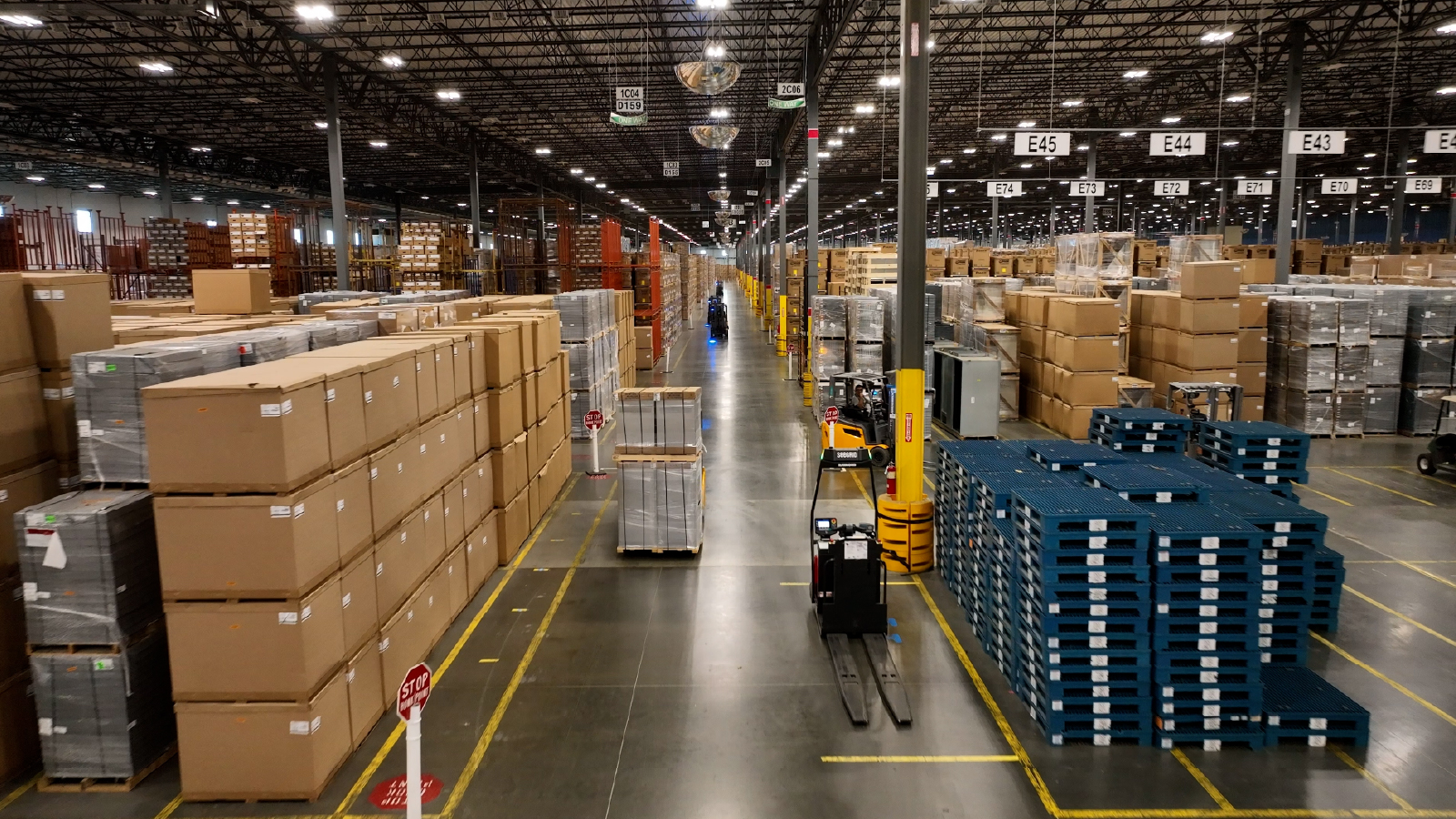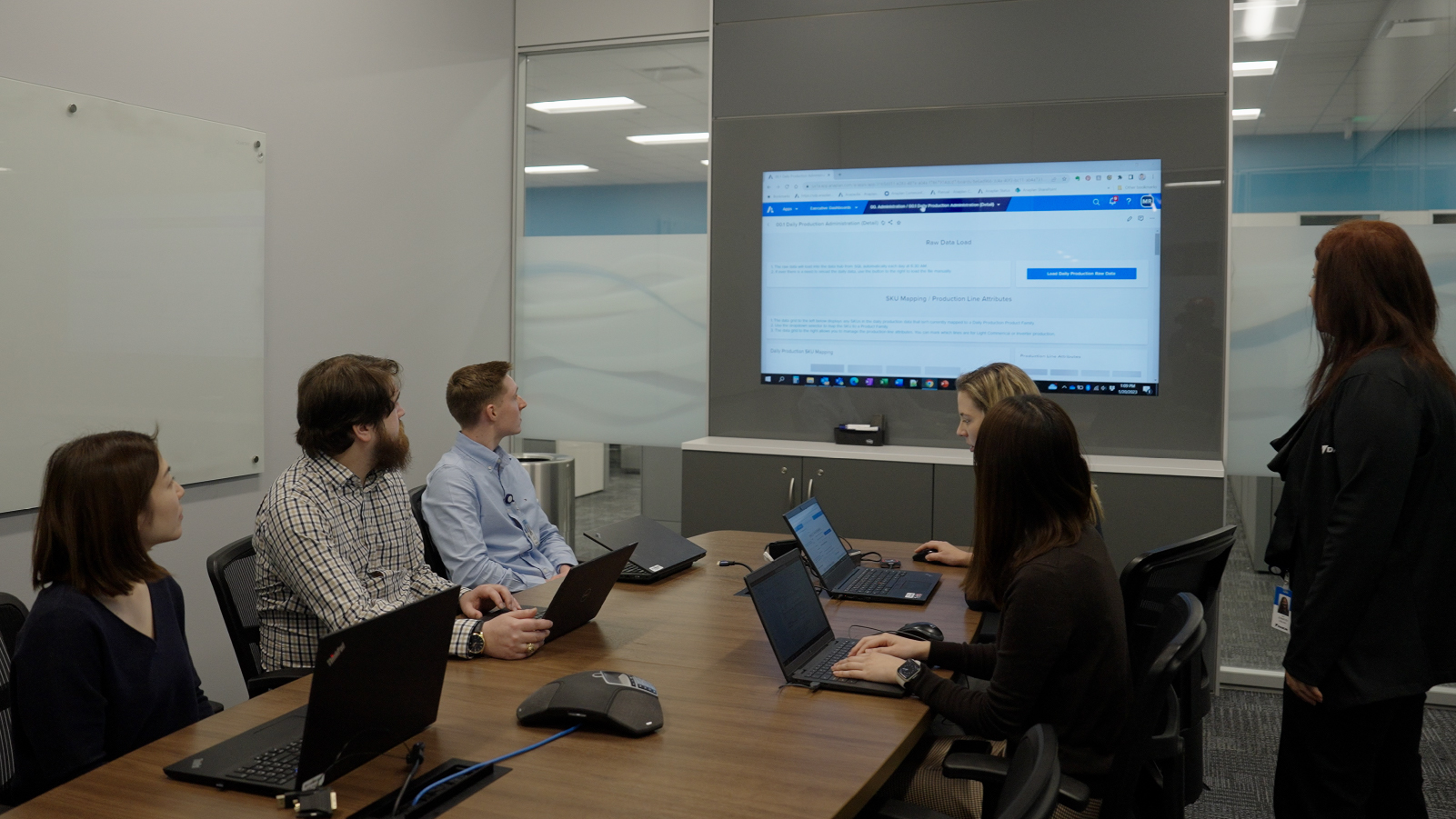As sales tripled and the business grew, the North American unit of air conditioning leader Daikin became increasingly complex, and required more accurate, timely data to make key decisions. With revenue reporting, financial planning, and S&OP all connected in Anaplan, Daikin leverages data from across the enterprise to see, plan, and lead its manufacturing and distribution business forward through a whirlwind of change.
We get a lot of additional value out of our revenue reporting, sales and operations planning, and our financial reporting because those things are all connected in Anaplan.Jennifer LeBlanc, Vice President, Corporate Planning, Daikin Comfort Technologies
450
locations nationwide report sales figures
19
cost centers contribute to a weekly forecast
One
Anaplan environment connects finance, sales, supply chain, and workforce planning
Air conditioner use has surged in the United States in recent years, and business is flourishing at Daikin Comfort Technologies, a Texas-based manufacturer of residential and light commercial HVAC equipment. Since Japan-based Daikin Industries acquired the company — then known as Goodman Manufacturing — in 2013, North American sales have tripled, and the company has completed 10 additional mergers and acquisitions. “It has been lots of change, lots of complexity,” notes Billy Shipley, Senior Vice President, Finance and Logistics. Daikin global leadership in Japan expects financial discipline and clear, timely reporting from his team, Shipley adds, “So it's imperative that we understand our financial data and the operational metrics that drive the financial results.”
Massive scale contributes to complexity
That understanding is no easy feat because Daikin’s business is multifaceted and huge in scale. In addition to manufacturing about five million HVAC units a year, the company operates a massive distribution network in the U.S. to get its products to customers. The company’s multiple revenue streams, including sales from 450+ locations nationwide, generate revenue data in huge volumes.
As another part of the information flood, 19 cost centers throughout the company, ranging from IT and HR to manufacturing and logistics teams, contribute data to a financial forecast each week. The corporate planning team must compile that data and present it weekly to the CEO. When it relied on emailed spreadsheets, this process was a constant scramble. “If there were questions, or things that didn’t quite add up, it was very difficult for the team to follow up on that prior to the meeting,” recalls Jennifer Leblanc, Vice President, Corporate Planning.
Bringing together sales, production, and finance
The corporate planning team started using Anaplan in early 2019 to address these challenges. “Here at Daikin, Anaplan started as a financial planning tool,” Shipley says. “But it has since grown into our organization.” The Anaplan environment now includes financial planning & analysis (FP&A), workforce planning, sales and incentive compensation planning, and supply chain/sales and operations planning (S&OP) use cases.
The Anaplan models share key data. For example, sales results (entered directly into Anaplan by the teams that generate the numbers) are connected to the weekly forecast and the financial plan, and also help drive production planning. Demand plans, in turn, are fine-tuned in response to transaction volumes. “We get a lot of additional value out of our revenue reporting, sales and operations planning, and our financial reporting because those things are all connected in Anaplan,” LeBlanc says. “It allows us to make better decisions, reduce our excess and obsolete inventory, and have more sales opportunities because we have the right product at the right place.”
Connection and collaboration streamline the weekly forecast, too. The 19 cost center owners enter their data directly into Anaplan and notify the corporate planning team with a click when they’re done. This results in accurate, complete, and timely reports to the CEO. But the process doesn’t stop there. The information also helps mitigate risk by identifying potential bottlenecks and other issues. “Because we communicate weekly with all 19 of those revenue and cost centers, when something is not aligning with the plan, we can very quickly help get them back on track,” LeBlanc says.
Connected Planning yields better decisions
Executive dashboards in Anaplan, created by LeBlanc’s corporate planning team from their rich trove of data, have become indispensable tools for decision-makers throughout the company. “There are a number of executives that come in every morning and look at reports that we've created,” LeBlanc says. “And they use them to make decisions about today's activities.”
Mark Pearson, Daikin’s Vice President of Data Management and Strategy, notes that people at every level in the company benefit from the Anaplan solution. “Individual team members’ ability to access good, clean, governed data is critical to helping them be more efficient,” he says. “But also, that data — as it feeds up into their team — helps them collaborate with other teams. And then executives are able to make better decisions because of the data that's being provided by the Anaplan platform.”
That means Daikin has business agility when and where it’s needed the most. “What Anaplan has helped us to do is to move our business as the environment was changing so fast,” Shipley says. “With Anaplan we can see the data, which helps us plan our future and lead the company in the right direction.”
Connected Planning in Manufacturing
[Billy Shipley, SVP Finance & Logistics] Here at Daikin, we specialize in residential AC and some light commercial HVAC. We made a little over 5 million units last year.
We have all of our manufacturing here currently. It is 4 million square feet. That fits 74 football fields with end zones. It's a landmark for sure.
[Jennifer LeBlanc, VP Corporate Planning] Our production process is 24/7. We are a major manufacturer, but then we also own a massive distribution network. And so it's really important for us to bring those two revenue reporting streams together. But it's very challenging because there's a large amount of data coming in every day.
So we've been able to use Anaplan as one source of truth. And now all of the groups are relying
on the same data source, even though the sales are being generated at over 450 locations throughout the U.S.
Because we report on our sales daily, and that is connected to our weekly forecast process and our production planning process, we have the opportunity now to see the volume of transactions that are moving through the system and to adjust our demand planning to be very responsive to our customers. And we have a lot of visibility into future orders as well. Those things inform not only the production process, but the financial plan.
We get a lot of additional value out of our revenue reporting, and sales and operations planning reporting, and our financial reporting, all because those things are all connected in Anaplan. [It] allows us to make better decisions, allows us to reduce our excess
and obsolete inventory, allows us to have more sales opportunities because we have the right product at the right place.
[Billy] In our business, conditions are changing every day, all the time. With Anaplan, and all of the data we have, we were able to ramp up manufacturing and get product out to the field quickly.
We can see the data, [which] helps us plan our future, and lead the company in the right direction.
Agility Amid Complexity
[Billy Shipley, SVP Finance & Logistics] In 2013, Daikin acquired Goodman. And since then it has been lots and lots of change, lots of complexity. Our sales have more than tripled in the ten years. We've also added ten mergers and acquisitions in the last four or five years. It's imperative that we understand our financial data and the operational metrics that drive the financial results.
[Jennifer LeBlanc, VP Corporate Planning] Prior to implementing Anaplan, we used to get 19 different spreadsheet submissions for our weekly forecast. The team would add them all together, do some formatting, and then present them to the CEO in a meeting. If there were questions, or there were things that didn't quite add up, it was very difficult for the team to follow up on that prior to the meeting. Now, with Anaplan, people can notify us when they're done, so it makes it much easier.
Because we communicate weekly with all 19 of those revenue and cost centers, when something is not aligning with the plan, we can very quickly help get them back on track.
[Mark Pearson, VP Data Management & Strategy] Individual team members ability to access good, clean, governed data is critical to helping them be more efficient. But also that data, as it feeds up into their team, it helps them collaborate with other teams. And then executives
are able to make better decisions because of the data that's being provided by the Anaplan platform.
[Jennifer] There are a number of executives that come in every morning and look at reports that we've created and they use them to make decisions about today's activities.
I don't know if I'm allowed to say this, but I transferred into corporate planning just as Anaplan was being implemented, and I honestly wouldn't have taken the job without it.
It makes the job about interaction with the business, Instead of 'cut, paste, assemble' from spreadsheets.
[Billy] Here at Daikin, Anaplan started as a financial planning tool, but it has since grown
into our organization. What Anaplan has helped us to do is to move our business as the environment was changing so fast.




